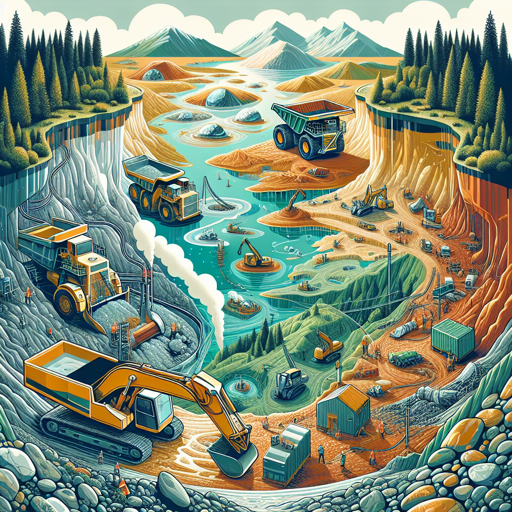The Environmental Impact of Mining and the Path Towards Sustainability
An in-depth exploration of the effects of mining on our environment and the steps being taken towards more sustainable practices.

Introduction
Mining has been a crucial part of human civilization for thousands of years. It has facilitated the development of technologies, industries, and economies. However, it is not without its challenges. Primarily, mining activities have substantial environmental impacts, including land degradation, deforestation, water and air pollution, and biodiversity loss. This article explores these effects and the emerging trend towards sustainable mining practices.
The Environmental Impact of Mining
Land Degradation and Deforestation
Mining usually involves the removal of large areas of land to extract resources. It leads to significant land degradation and deforestation, resulting in habitat loss for many species.
Water and Air Pollution
Mining activities often lead to water pollution due to the discharge of heavy metals and chemicals into water bodies. Furthermore, the extraction and processing of minerals release harmful substances into the air, contributing to air pollution and climate change.
Biodiversity Loss
The destruction of habitats due to mining operations threatens biodiversity. Many species are forced to migrate, leading to a disruption in the local ecosystem’s balance.
| Environmental Impact | Description |
|---|---|
| Land Degradation | Large areas of land are disturbed or removed during mining operations. |
| Deforestation | Mining leads to the clearing of trees and vegetation, causing habitat loss. |
| Water Pollution | Heavy metals and chemicals used in mining contaminate local water sources. |
| Air Pollution | Mining releases harmful substances into the atmosphere, contributing to air pollution and climate change. |
| Biodiversity Loss | Destruction of habitats forces species to migrate or perish, disrupting local ecosystems. |
Towards Sustainable Mining
As awareness around the environmental impact of mining increases, steps are being taken to move towards more sustainable practices. These include:
- Improving mining efficiency: By enhancing mining techniques, we can reduce the amount of land, water, and energy needed to extract resources.
- Recycling and reusing: Recycling metals can significantly reduce the need for new mining operations.
- Restoring ecosystems: After mining operations end, efforts should be made to restore the environment to its original state.
Quote
As world-renowned primatologist Jane Goodall once said:
“You cannot get through a single day without having an impact on the world around you. What you do makes a difference, and you have to decide what kind of difference you want to make.”
This quote reminds us of our responsibility towards the environment and the importance of sustainable practices in all aspects of human activity, including mining.
Conclusion
Mining is a double-edged sword. On one hand, it provides resources crucial for our modern life. On the other hand, it has significant environmental impacts. The key to balancing these aspects lies in sustainable mining practices. By improving efficiency, recycling and reusing resources, and restoring ecosystems, we can minimize the environmental footprint of mining while continuing to benefit from its products.
For more insights into sustainable mining practices, refer to this guide provided by the World Bank.